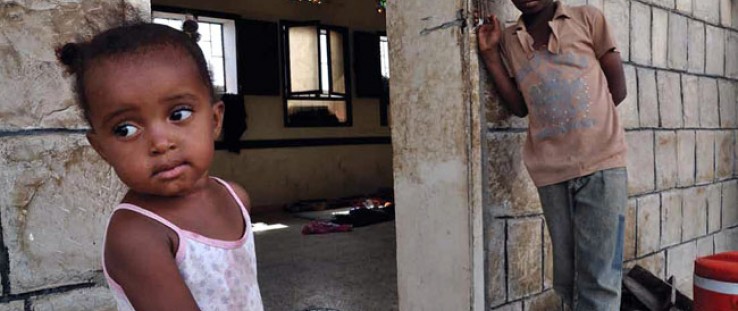 A young internally displaced girl from Abyan governorate.
Ebrahim Al Sharif
A young internally displaced girl from Abyan governorate.
Ebrahim Al Sharif
 A young internally displaced girl from Abyan governorate.
Ebrahim Al Sharif
A young internally displaced girl from Abyan governorate.
Ebrahim Al Sharif
It was once a local schoolhouse, but now the only sound is the buzzing of flies circling lazily over prone bodies, offering bleak testimony to the malaise of homelessness. Eight families are squatting in this derelict school in Yemen’s Lahj governorate, refugees from the fighting that erupted between government forces and al-Qaida-backed militants in the neighboring governorate of Abyan.
“This is such an awful place for us,” says Arwa, a flat-faced, strong-jawed older woman who does not know her age. Arwa, whose surname has been omitted to protect her security, awkwardly half sits, half reclines in the pale dust, staring vaguely out of eyes clouded with cataracts. She is sick, and can neither stand, sit, nor walk properly because her hips and cracked, blackened feet are so twisted with arthritis that they cannot hold her up.
“We have nothing here,” Arwa says. “No food, no clothing. The water is filthy, and we are always sick. We have been totally abandoned.”
A Lifeline to the Poor
Well, not totally abandoned. At this location, Arwa is among the 40-odd people—mostly women and children—who receive treatment from a USAID-funded Mobile Medical Team (MMT), a joint venture between the Lahj Governorate Health Office and the USAID-funded Community Livelihoods Project.
MMTs provide basic primary care, diagnose illnesses, and hand out medications free of charge to the most poor and marginalized populations living in remote communities or on the fringes of the larger cities. With more than 15 operating throughout the country, they serve an estimated 2,000 beneficiaries per month, more than 29,000 since the project’s inception 15 months ago. The project plans to expand in 2012, aiming to add an additional five MMTs and reaching out to 80,000 beneficiaries by September.
Both male and female doctors work out of tiny rural health and community centers and schools. The mobile vans contain ultrasound machines in addition to other basic diagnostic equipment and a stockpile of essential medicines. Some of the vans are equipped so that the service providers can examine patients inside the van. Others are small and just carry the staff and the equipment to a location where they can serve the population.
Dr. Muwada Huida is one of the women doctors who works in the Lahj MMT. “There are so many issues here,” she says.
According to Dr. Huida, most patients arrive with upper respiratory infections or gastroenteritis owing to contaminated water and food. Many women come in with pregnancy and post-pregnancy complications—often after travelling huge distances on foot or by bus.
On this day, Arwa received treatment for a respiratory tract infection.
“This is the only access to basic health that any of them have,” Dr. Huida adds, gesturing toward the crowd clamoring to be treated. “The situation is dire, but it would be far worse without our monthly visits.”
A Humanitarian Time Bomb
In Yemen, crushing poverty, insecurity, and dwindling resources are contributing to what UNICEF and other agencies describe as a growing humanitarian disaster on par with that of Somalia. The U.N. World Food Program (WFP) estimates that more than 7 million Yemenis, one-third of the population, suffer from hunger. Fully 60 percent of Yemeni children, and quite possibly many more, suffer from severe stunting, which can have permanent effects. In more remote areas, UNICEF reports that acute malnutrition rates are consistent with the hardest-hit famine regions in the Horn of Africa—with 30 percent of those under the age 5 suffering from wasting (the degradation of muscle and fat tissue), and an additional 10 percent literally starving to death. Yemen also has among the highest maternal and neonatal death rates in the world.
The country’s high fertility rate adds to concerns about Yemen’s present as well as its future.
“We have a growth rate of almost 3 percent,” says Omar Zain, general manager of the Lahj Governorate Health Office. “If we cannot change this, we will be facing an economic and social crisis even worse than we are now.”
The main stumbling block, he says, is inadequate access to reliable family planning methods in hard-to-reach rural areas combined with insufficient awareness. Inequality and lack of autonomy within the family mean that men tend to make the family planning decisions; the average Yemeni woman will give birth to 6.3 children during her lifetime. A combination of poor access to contraceptives, early marriage, chronic malnourishment, and too many pregnancies in quick succession further exacerbate the toll on women’s bodies and their ability to provide their children with food, a decent education, and health care.
“We simply cannot handle what the future will bring unless we bring this situation under control,” Zain adds.
And it is in this area where USAID is also making a difference. In addition to MMTs, USAID is training and equipping midwives and focusing its efforts on family planning. For example, USAID provided midwives with delivery kits and autoclaves for instrument sterilization. The Agency supported training for midwives on infection prevention, family planning counseling, and intrauterine device insertion. USAID assisted local organizations to modify, produce and distribute educational materials on maternal/child health and family planning, targeting service providers and community midwives, and benefitting an estimated 200,000 people.
Back in the Health Office in Lahj, Zain maintains that the nearly one-year-old crisis is making an already dire situation far worse. Abyan, the most unstable and conflict-prone of the southern governorates, is now proving to be the epicenter of outbreaks of communicable diseases that are spreading outward to other governorates.
According to Zain, most children under age 5 are no longer being vaccinated. A measles outbreak occurred in one village. “We aren’t surprised by this because of the insecurity,” he says. But this, he also notes, poses a threat to the entire country as this particular village sits on a road that serves as one of the main arteries to Sana’a and other urban centers.
A Glimmer of Hope
For the cluster of families hunkered down at the school in Lahj, the mobile clinic offers a brief glimmer of hope. Violence, displacement and lack of access to health services have taken their toll on the residents, who suffer from a range of serious health problems—everything from upper respiratory infections and gastrointestinal illnesses, to high blood pressure, and in Arwa’s case, unremitting pain, heart disease, and a hepatitis B infection, likely acquired during what is euphemistically known as “the crisis.”
But the health services these families receive at the mobile clinic sustain them during this trying time. Although their situation is desperate, seeing the mobile clinic roll up is a monthly reminder that the government and the international community have not forgotten their plight.
Members of USAID’s Community Livelihoods Project contributed to this article.







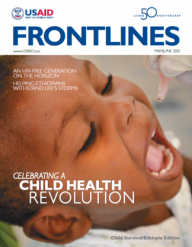

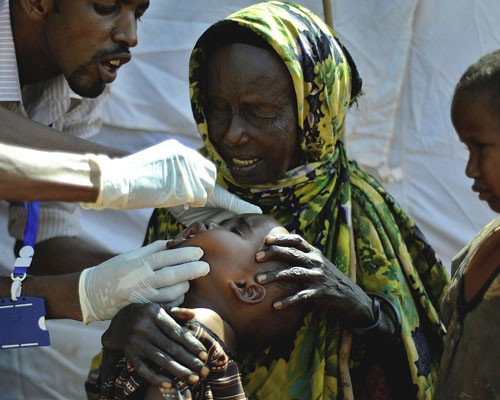
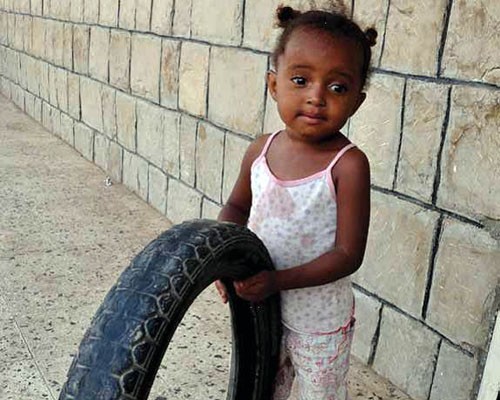
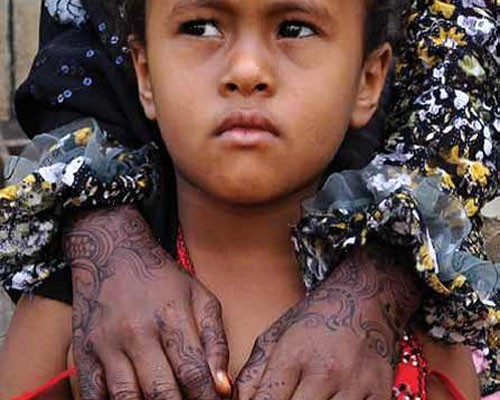
Comment
Make a general inquiry or suggest an improvement.